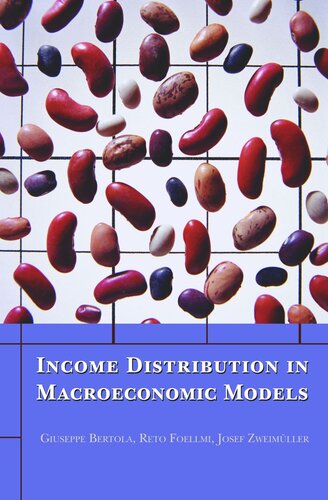

Most ebook files are in PDF format, so you can easily read them using various software such as Foxit Reader or directly on the Google Chrome browser.
Some ebook files are released by publishers in other formats such as .awz, .mobi, .epub, .fb2, etc. You may need to install specific software to read these formats on mobile/PC, such as Calibre.
Please read the tutorial at this link: https://ebookbell.com/faq
We offer FREE conversion to the popular formats you request; however, this may take some time. Therefore, right after payment, please email us, and we will try to provide the service as quickly as possible.
For some exceptional file formats or broken links (if any), please refrain from opening any disputes. Instead, email us first, and we will try to assist within a maximum of 6 hours.
EbookBell Team

0.0
0 reviewsThis book looks at the distribution of income and wealth and the effects that this has on the macroeconomy, and vice versa. Is a more equal distribution of income beneficial or harmful for macroeconomic growth, and how does the distribution of wealth evolve in a market economy? Taking stock of results and methods developed in the context of the 1990s revival of growth theory, the authors focus on capital accumulation and long-run growth. They show how rigorous, optimization-based technical tools can be applied, beyond the representative-agent framework of analysis, to account for realistic market imperfections and for political-economic interactions.
The treatment is thorough, yet accessible to students and nonspecialist economists, and it offers specialist readers a wide-ranging and innovative treatment of an increasingly important research field. The book follows a single analytical thread through a series of different growth models, allowing readers to appreciate their structure and crucial assumptions. This is particularly useful at a time when the literature on income distribution and growth has developed quickly and in several different directions, becoming difficult to overview.